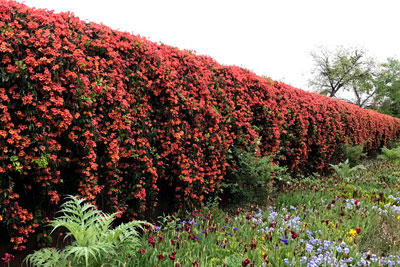Crossvine Hits the Big Time
Note: Photos used this week, unless otherwise noted, were posted to my Facebook page by friends in the past week. You’ll see why I wanted to feature this plant. Thanks to each of them for allowing this repost here.
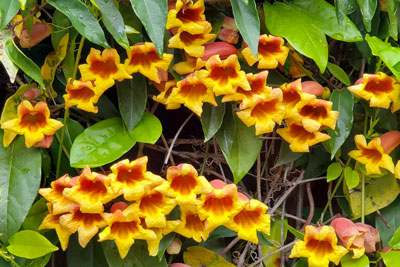
The first crossvine I remember seeing was at the Dallas Arboretum probably 30 years ago. It was draped over the walls of the old herb garden of the Camp Estate. It’s a native vine from the East Texas forests, but somehow it and I had never crossed paths.
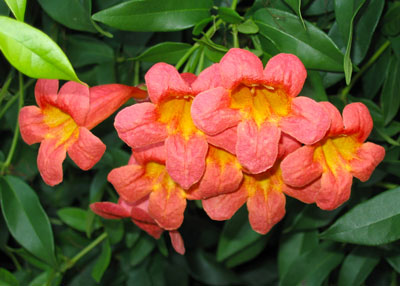
I’ve watched the plant catch the eyes of landscapers ever since – and plant collectors as well, because now we have several selections that offer a nice assortment of flower colors that range from golden yellow to orange to deep rusty red.
But you can see all of that from the photos. Let me give you the facts about growing it.

Crossvine (Bignonia capreolata)
Here are the key things you’ll want to know about this lovely climber.
• Crossvine Bignonia capreolata
• Member of Bignoniaceae (the trumpetcreeper plant family).
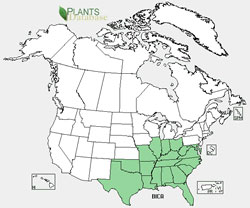
• Native to the southeastern quarter of the United States, from the Midwest to the Atlantic Ocean and also including the eastern regions of Texas.
• Grows to 40-50 feet.
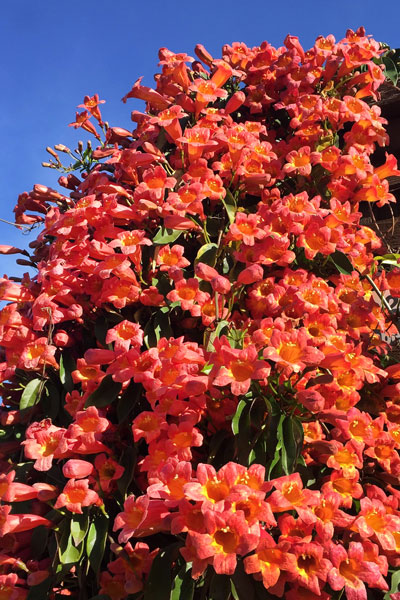
• Best in full sun. Tolerant of some shade.
• Prefers neutral or slightly acidic soil. May thin and weaken in highly alkaline soils.
• Does best if kept uniformly moist (not allowed to struggle through droughts).
• Climbs by tendrils and suction cup appendages.
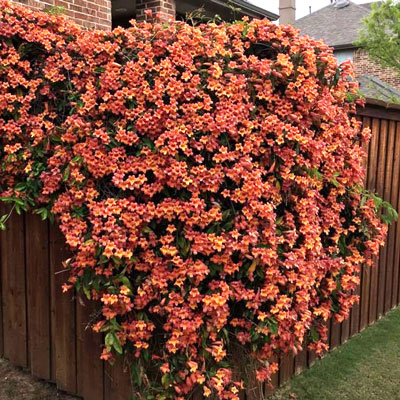
• Similar in appearance to trumpetcreeper, but more mannerly grower.
• Propagated by cuttings or from seed. Cuttings are required for named varieties.
• Many named selections are available. ‘Tangerine Beauty’ is the most common. Its name pretty well tells its story.
